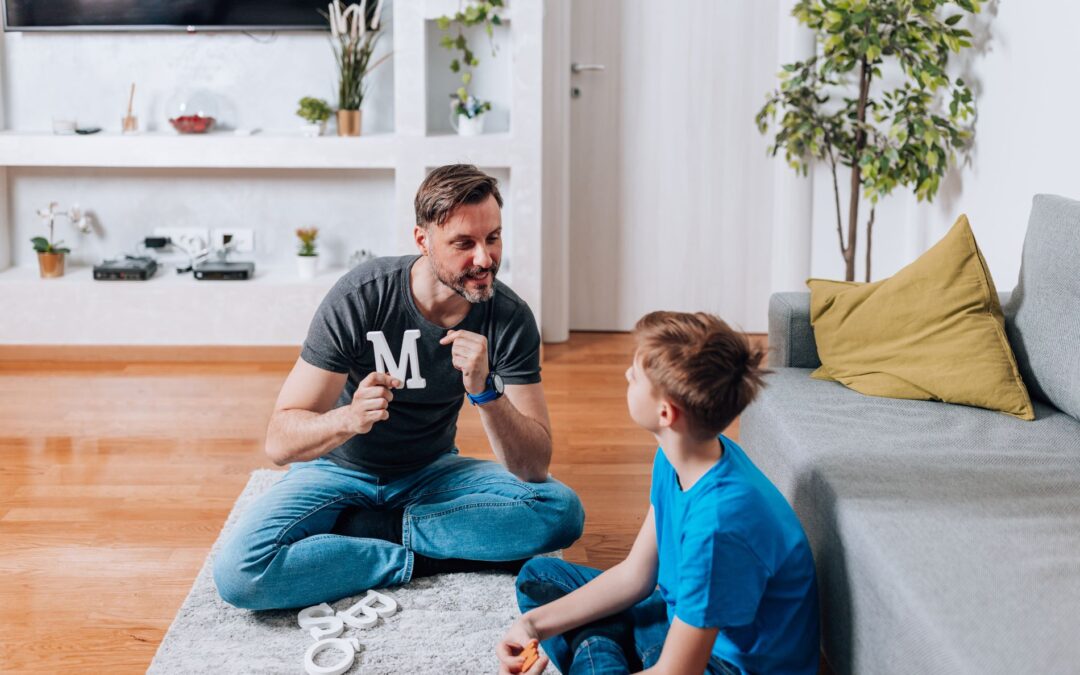Learning to communicate is a vital milestone for every child, and it can be especially challenging for those who are non-verbal. Often, these children struggle to express their needs or emotions, which can lead to frustration and misunderstanding. One effective method to bridge this communication gap is Functional Communication Training (FCT). Through structured strategies, FCT offers children a way to express themselves, fostering understanding and connection.
Functional Communication Training is rooted in the principles of Applied Behavior Analysis (ABA). It equips children with skills to communicate their needs in a clear and appropriate way. This training not only enhances their ability to interact with others but also helps reduce challenging behaviors that stem from being unable to communicate effectively. With FCT, children learn alternative ways to express themselves, whether it’s through gestures, pictures, or communication devices, thereby enhancing their quality of life and their interactions with those around them.
What Is Functional Communication Training (FCT)?
Functional Communication Training is a useful approach designed to replace challenging behaviors with functional communication skills. In an ABA therapy context, FCT focuses on identifying the purpose or function behind a child’s behavior. By understanding what a child is trying to communicate through their actions, therapists can teach alternative ways to express those needs more appropriately.
The real value of FCT lies in its personalized nature. Each child’s communication method is tailored to their abilities and needs. Some children might use picture exchange systems, while others might start with simple signs or gestures. For instance, a child who struggles to ask for help verbally might be taught to use a gesture or a picture card to communicate this need. This not only empowers the child but also makes interactions smoother and more meaningful.
By incorporating FCT into ABA therapy, children gain essential communication skills, which play a crucial role in their development. It allows them to thrive in their environments by promoting better understanding and helping them connect with peers, family, and caregivers in a positive way.
Steps to Implement FCT with Non-Verbal Children
Implementing Functional Communication Training requires a thoughtful process. Here are the main steps involved:
1. Identify communication needs and goals: Start by observing the child’s existing behaviors to determine what they are trying to communicate. Set clear and achievable goals that align with the child’s needs.
2. Choose appropriate communication methods: Depending on the child’s abilities, select suitable communication tools. These may include gestures, picture exchange systems, or electronic devices that can vocalize requests or emotions.
3. Consistently practice and reinforce skills: Regular practice is key to mastering new communication methods. Reinforcement strategies, like verbal praises or small rewards, can encourage children to use their new skills consistently.
Through consistent application, FCT not only aids children in expressing their needs but also enhances their confidence and ability to interact with others effectively. This process is a journey of small but significant steps, each contributing to a child’s overall communication development.
Benefits of Using FCT for Non-Verbal Children
Functional Communication Training brings several advantages to non-verbal children, offering a pathway to articulate desires and emotions that were once challenging to express. As children begin communicating more effectively, one notable change is in their behavior. Misunderstandings and frustration often lead to disruptive behaviors, but with the tool of communication, these incidents begin to decrease. Children find reassurance in being understood, leading to calmer interactions.
Another benefit is the enhancement of social skills. When children can express themselves, it opens doors to interact with peers and participate in group settings. This sense of engagement encourages independence, as children no longer rely solely on adults to interpret their needs. Increased connections with others help boost confidence, paving the way for fulfilling social interactions.
The ripple effect of improved communication extends beyond the child to the family. Parents and caregivers experience a newfound ease in their daily routines. Questions like “Do you want this?” or “Are you hungry?” can be addressed with simple cues, creating a shared language between the child and family. The overall quality of life sees a boost, with harmony and understanding replacing previous barriers.
Tips for Parents and Caregivers
Supporting a non-verbal child through Functional Communication Training requires patience and teamwork. Here are some practical tips to make the journey smoother:
– Create a supportive environment: Make sure the home environment encourages communication. Visual aids and communication tools should be accessible, helping children express their needs wherever they are.
– Collaborate with therapists and teachers: Work closely with professionals involved in your child’s education and therapy. Regular communication ensures consistency in the methods used both at home and in therapy sessions.
– Celebrate small successes: Every step forward, no matter how small, is a step worth celebrating. Recognizing achievements fosters motivation and confidence.
Staying involved and open to learning alongside your child makes a significant difference as they develop their communication skills.
Helping Non-Verbal Children Express Their Needs in Chicago, IL
In a city like Chicago, there are numerous resources and support networks that can aid families implementing FCT. Chicago offers unique programs and support groups tailored for children with communication challenges. These resources offer a great opportunity for parents to connect with experts and other families on similar journeys.
Specialized consultants are well-versed in local needs, providing guidance that factors in the regional context of Chicago. By tapping into these resources, families find a nurturing community to help their children make strides in communication.
Enhancing a Child’s Communication Skills
Functional Communication Training stands as a beacon of hope for non-verbal children, bridging the gap between thoughts and words. By focusing on individual needs and offering personalized solutions, FCT encourages the growth of meaningful communication. This journey empowers children to share their world, transforming how they connect with others and enrich their lives holistically.
To help your child reach their full potential, consider the empowering benefits of functional communication training. Strive ABA Consultants in Chicago is ready to support you and your family on this transformative journey, providing you with the tools and strategies needed to improve communication effectively. Harness the guidance of professionals who understand your unique needs, and watch your child thrive with improved communication and confidence.


